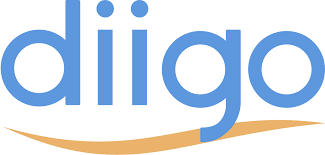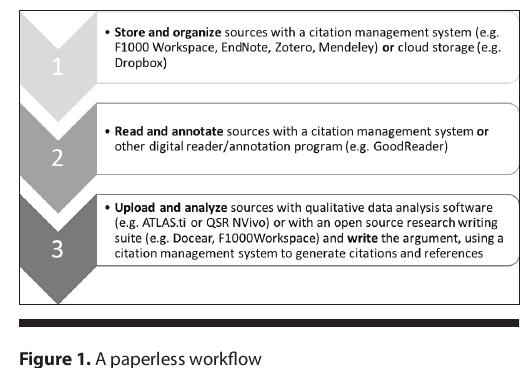
There is significant opportunity within higher education environments–indeed, all education environments–to lean into a constructivist educational philosophy and approach knowledge as something co-created by both instructors and students. Furthermore, as higher education courses and programs are increasingly offered in hybrid and fully online modalities, finding authentic ways for students to increase their social presence and overall engagement-level in coursework is essential (Baran, 2013). Digital tools can greatly assist in the act of socially constructing knowledge by helping to eliminate learning boundaries and extend opportunities for both formal and informal learning in a myriad of ways (Baran, 2013).
Within higher education, one of the more important realms of knowledge construction between students and instructors, especially at the graduate level, takes place in the academic research process and in the conversations that, quite literally, take place in the margins within that research process (Farber, 2019). As a graduate student who currently does not use any specific annotation or research collaboration tools for research outside of Microsoft Teams or Google Suite, I am curious to explore the ways in which the social bookmarking tool Diigo (which allows learners to collect, annotate, organize, and share online resources) supports efficient, collaborative research among instructors, students, and their peers in higher education. Furthermore, I am interested in anecdotally comparing my exploration of this tool with the functionalities of more recently-released (and decidedly more expansive) digital collaboration tools like Teams and Google+. Does Diigo hold its own in the digital collaboration tool market in 2021?
According to the product website (Diigo Inc., 2021), Diigo supports collaborative learning endeavors in four key ways. It allows users to:
- Collect: save and tag online resources to public or private curated libraries for easy access
- Annotate: annotate web pages, PDFs, and other digital content directly while browsing online
- Organize: organize links, references and personal input to create a structured research base
- Share: share research with friends, classmates, colleagues or associates
Originally released in 2011, Diigo (Digest of Internet Information, Groups and Other stuff) quickly found a dedicated user-base and distinguished itself from other types of bookmarking applications (most notably its 2003 bookmarking predecessor, Delicious) due to its user-friendly interface, emphasis on social engagement, and extensions specific to use in education, combined with more traditional bookmarking functionalities (Ruffini, 2011). The table below shows a helpful comparison between Diigo, its initial competitor and predecessor Delicious (now defunct), and the typical bookmarking capabilities of a web browser.
Table 1. Social Bookmarking Comparison Chart (updated by Ruffini, 2011)
| Feature | Diigo | Delicious | Browser |
| Organize bookmarks automatically with tags | x | x | x |
| Popular bookmarks | X | X | X |
| Anytime, anywhere access to bookmarks | X | X | |
| Share bookmarks with others | X | X | |
| Powerful, customizable search tools | X | X | |
| Groups of people with similar interests | X | X | |
| Post automatically to blog | X | X | |
| Tools and browser extensions for bookmarking | X | X | |
| Lists of grouped bookmarks | X | X | |
| Free iPhone and Android apps | X | Third party | |
| iPad Safari browser bookmarklet | X | ||
| Add and share sticky notes | X | ||
| Capture, mark up, share images and text | X | ||
| Collect web pictures into albums | X | ||
| Sync bookmarks | X | ||
| Tools for educators | X |
As the table indicates, Diigo offers much more functionality in several categories, but most notably (pun intended) in the realm of annotation. When installed as a browser extension, Diigo can be integrated fairly seamlessly into existing research habits, and perhaps most importantly, most Diigo tools can be accessed for free.
Since Delicious left the scene, new social learning/annotation tools have surfaced such as Hypothesis.is and Mendeley, both of which deliver many of the same features as Diigo, and both of which are largely open access. Though a detailed direct comparison of these tools is beyond the scope of this post, a brief exploration seems to suggest that Hypothesis might be most appealing for educators who would like to incorporate the application into their Learning Management System (LMS). Hypothesis can integrate nicely into all of the major LMS platforms and it offers many resources and training videos for educators so that they can truly maximize their use of the tool within their planned learning activities (Guhlin, 2020). Mendeley, a tool primarily intended for use in higher education, has a handy “cite as you write” plugin that prioritizes the streamlining of the reference process, automatically capturing author, title, and publisher information as needed (Guhlin, 2020).
Though it’s now been a decade since its release, Diigo seems to maintain its relevance and dedicated user base for several reasons:
- It is a bit simpler and more user-friendly than its competitors such that it is more easily adapted for use in a variety of learning environments and contexts, including both K-12 and higher education (Guhlin, 2020).
- Diigo seems to be the tool with the strongest integrated support for educators independent of an LMS. Since its early stages, special accounts are available for educators that empower registered teachers with a variety of extra tools and features, leveraging the tool for use and collaboration with an entire class if desired (Education Technology, 2015).
- Individual features like Diigo Outliner, which lets you create and share digital outlines within a document, add sustaining value to the tool; these features are more nuanced than the general commenting features or Track Changes available in so many other types of collaboration tools (Guhlin, 2020).
- Because of its longevity, Diigo has had time to collect a large, lasting user base and dynamic Interest Groups (i.e. K-12 teachers, higher education instructors, researchers, etc.) which offer grassroots professional development tips and organic user insights accessible to the whole community (Ruffini, 2011).
- Diigo’s longevity is also a testament to the creators’ ability to update the tool to best fit user needs over time, and there continue to be product and app updates on a regular basis. Diigo has evolved over the years, and today it is used more frequently for its collaboration/annotation capabilities than the social bookmarking services it was originally focused on (Guhlin, 2020).
Having recently worked on a collaborative research publication using Microsoft Teams, and as a frequent user of collaborative Google products for both academic and personal endeavors, I was curious if this exploration would support Diigo as a stand-alone tool to be considered for use in collaborative research endeavors, or whether its offerings were more or less synonymous with tools embedded within these larger platforms. Anecdotally, I think the answer is yes, Diigo does stand alone, at least for specific use cases.
Both Teams and Google have many strengths when it comes to video conferencing, and cloud-based word processing and document sharing, but I do not find that these tools go quite so far to aid in the initial research phase. According to Educational Technology and Mobile Learning (2015), with Diigo, student and faculty researchers may:
- Search for online content relevant to their project, bookmark the websites and then add them to a shared ‘class’ or group
- Organize bookmarks by tags and date to organize content around a particular topic and to make it easy to search for it later
- Highlight specific segments of a webpage or add sticky notes to annotate them for others to read
- Take screenshots of useful online content and annotate them for use as well
In these cases, Diigo essentially cuts out a step (or multiple steps) for an instructor or student trying to share research. In the initial research phase, a researcher using Diigo would not need to save and download a PDF or copy the link for a website of interest, only to reupload it or paste it later to a general repository, not having the same ability to annotate the resource or organize it as efficiently as Diigo would allow. However, I do think Diigo finds its strongest value in working for a specific research purpose with a specific group of people. Its value is inherently collaborative and is best used when trying to co-construct knowledge. Consequently, it isn’t a tool I’ll be using regularly in my daily academic activities for just myself, but it is a tool I’ll be reaching for when it comes time to spearhead my next research project.
Resources:
Baran, E. (2013). Connect, participate and learn: Transforming pedagogies in higher education. Bulletin of the IEEE Technical Committee on Learning Technology, 15(1), p. 9-12. http://citeseerx.ist.psu.edu/viewdoc/download?doi=10.1.1.681.1177&rep=rep1&type=pdf
Diigo Inc. (2021). Diigo. https://www.diigo.com/
Education Technology and Mobile Learning. (2015, January 14). 7 ways students use Diigo to do research and collaborative project work. https://www.educatorstechnology.com/2015/01/7-ways-students-use-diigo-to-do-research.html
Farber, M. (2019, July 22). Social Annotation in the Digital Age. Edutopia. https://www.edutopia.org/article/social-annotation-digital-age
Guhlin, M. (2020, April 13). Note-taking and outlining: Five digital helpers. TechNotes. https://blog.tcea.org/note-taking-and-outlining/
Ruffini, M. (2011, September 27). Classroom collaboration using social bookmarking service Diigo. Educause Review. https://er.educause.edu/articles/2011/9/classroom-collaboration-using-social-bookmarking-service-diigo
Schmidt, Jason. (2010, July 30). Diigo and Delicious. Interactive Inquiry. https://iisquared.wordpress.com/2010/07/30/diigo-and-delicious/




